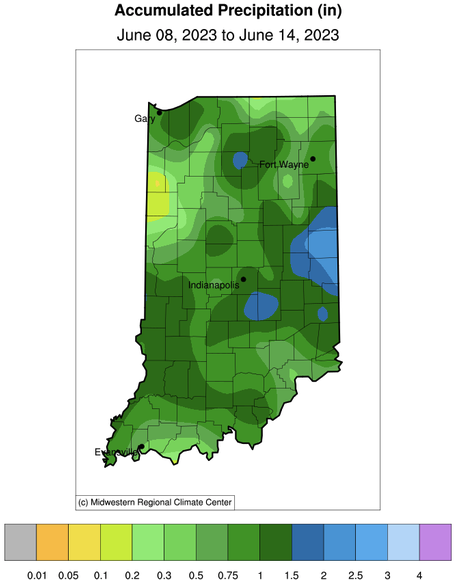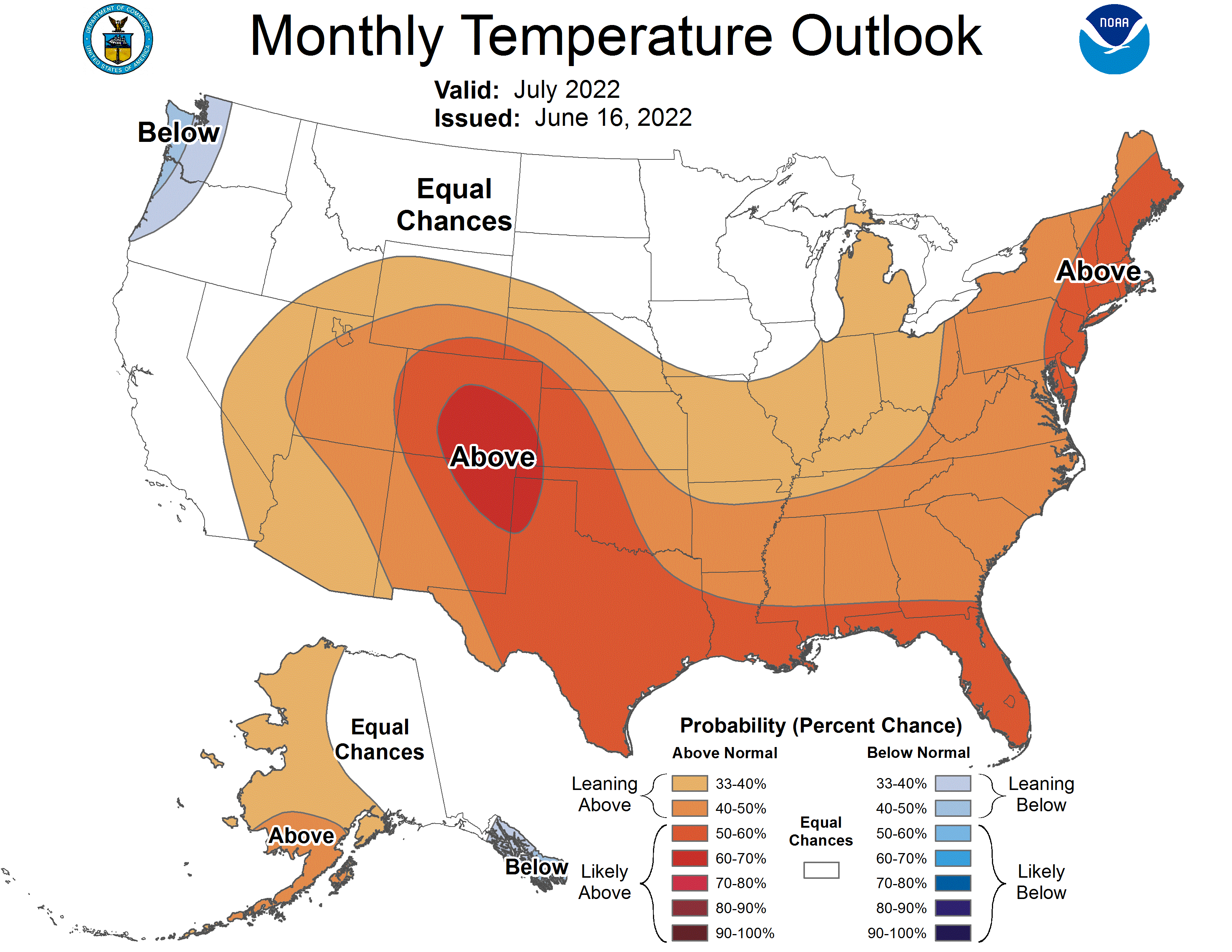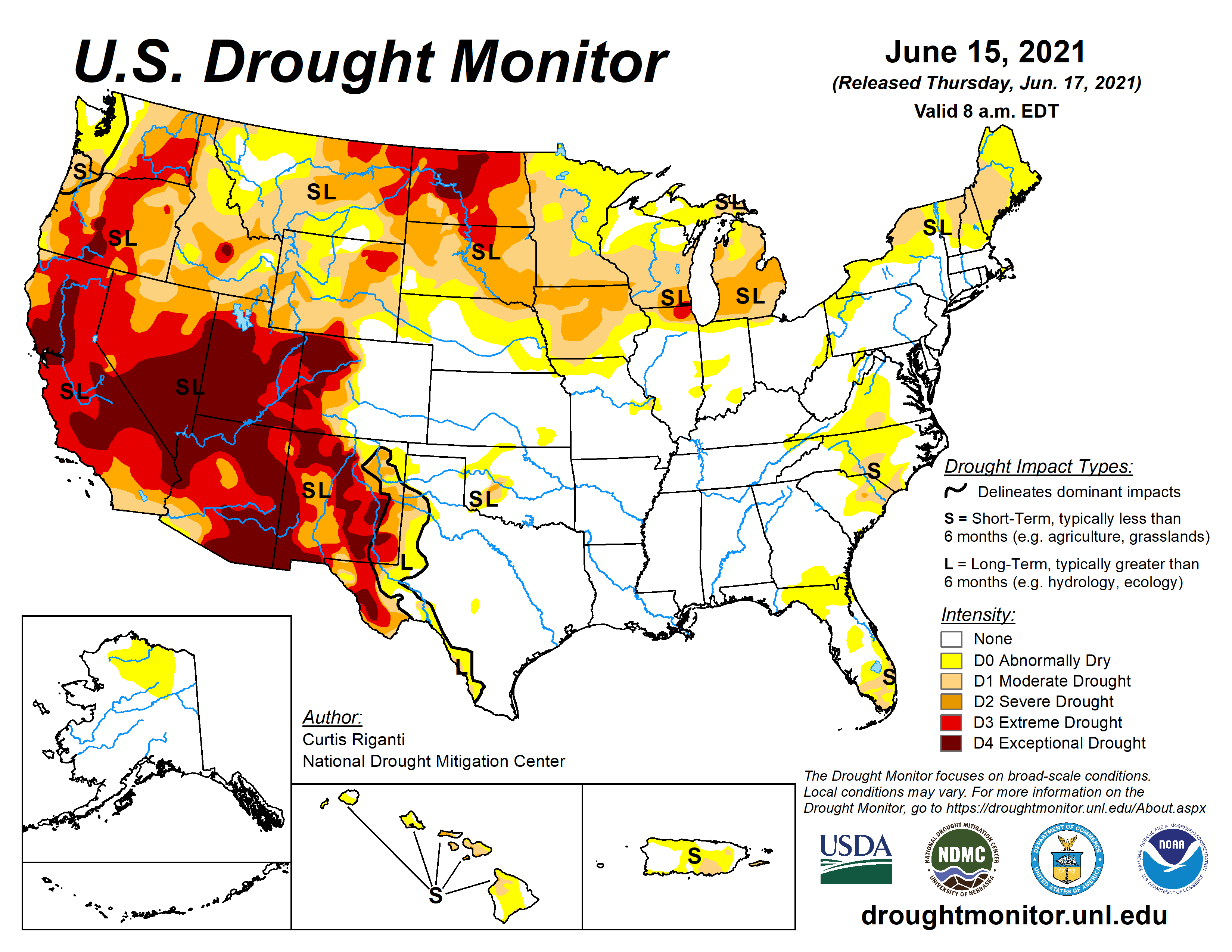
After several weeks of little-to-no rain, Indiana welcomed some much-needed precipitation over the last several days. While amounts ranged from 1-to-3 inches (except for a few counties in west-northwest Indiana (see Figure 1)), the state is still several inches from recovering from the deficit and relieving most impacts. The U.S. Drought Monitor this week (based upon data through the morning of Tuesday, June 13th) now has all of Indiana in some category of abnormal dryness or drought (Figure 2). The driest location is northwestern Indiana where severe drought (D2) is impacting several counties. Most of northern and some central Indiana counties are in moderate drought (D1) with southern Indiana Abnormally Dry (D0). After the additional precipitation that fell on June 13th along with what is forecasted (Figure 3) through next Thursday, Jun 22nd, there is a strong probability that drought will not worsen for much of the southern half of[Read More…]





